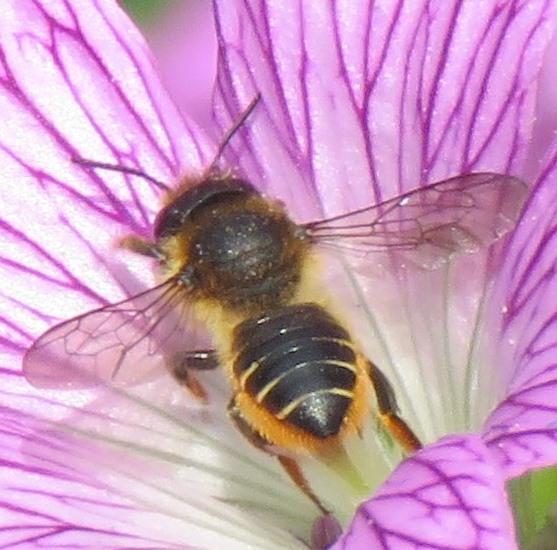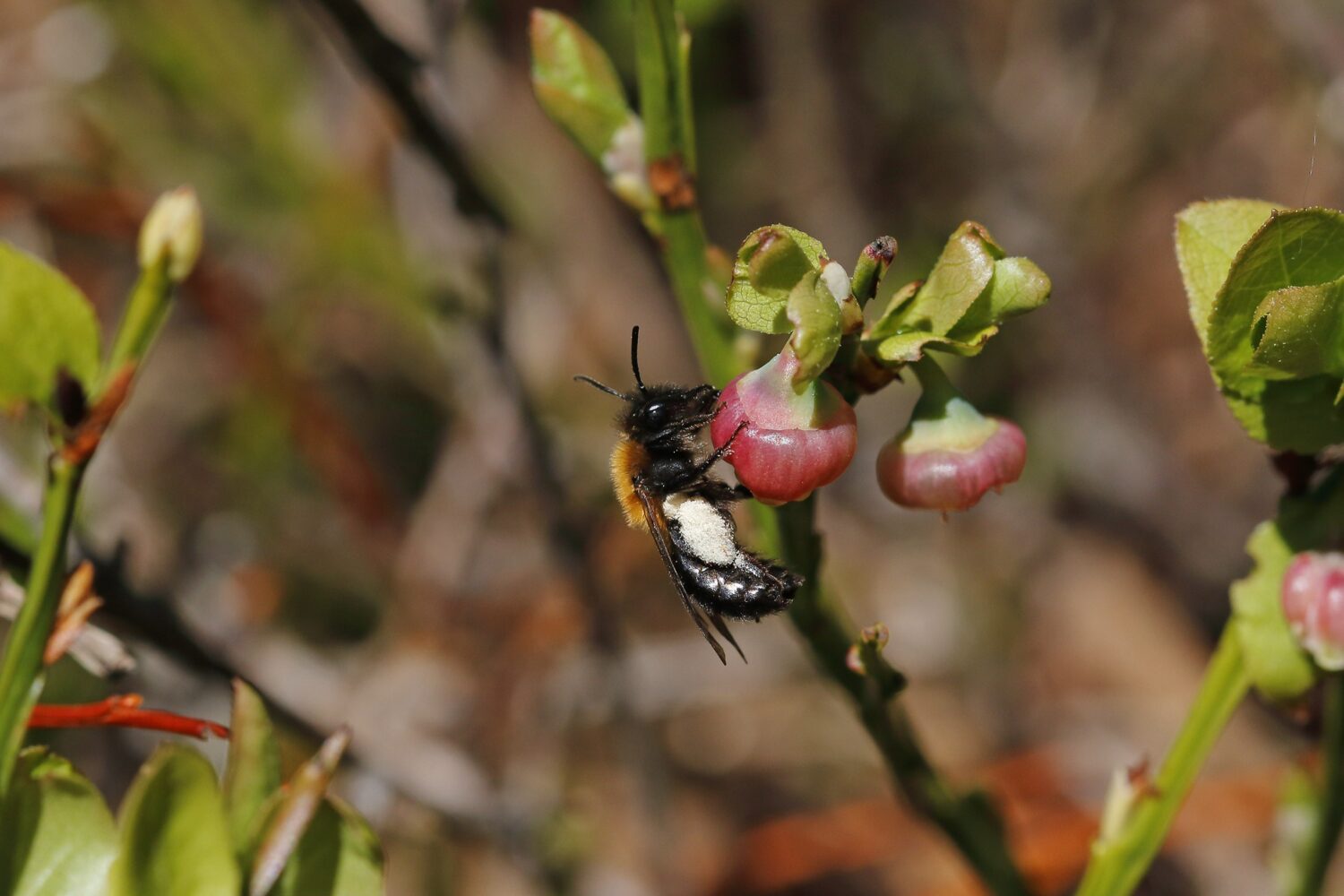Philip Jordan shares six things he learnt while finding bees as part of the North East Bee Hunt in 2020.
I’ve always liked seeing bees, especially in spring. Then I get distracted by bird ringing, monitoring nest boxes and doing butterfly surveys. In 2020, the coronavirus put a stop to all these activities. The North East Bee Hunt came at the perfect time. Here are six things I’ve learnt.
Don’t get stressed about identifying species
For a start, the eight target species chosen by the bee hunt are pretty distinctive. Also, if you attach a photo to your record, an expert will check your identification. One of my first records was corrected from Tawny Mining Bee (Andrena fulva) to Buffish Mining Bee (Andrena nigroaenea) as the tibia on the hind leg had orange hairs.
Take photos
Obviously, the experts can only check your identification if you upload at least one photo. Sometimes, I’ve no idea what species I’m photographing. I only knew that I’d found a fork-tailed Flower Bee (Anthophora furcata) after sending the photo to Charlotte Rankin, NHSN Conservation Officer. I did manage to identify a male Willughby’s Leafcutter Bee (Megachile willughbiella) by zooming in on the thick tarsus on the front leg, which the male uses to cover the female’s eyes when they are mating.
Go beyond identification
Once you know what species you’re looking at, it’s fascinating to find out a bit more about their behaviour. If you’ve noticed oval sections cut out of your rose leaves, it’s probably a female Leafcutter Bee. She rolls it up and lays an egg inside it with a store of nectar and pollen for the caterpillar when the egg hatches. She puts these egg cells in holes in, for example, bee hotels.
Put up a Bee Hotel
This is the first year we’ve had a bee hotel and the Red Mason Bees (Osmia bicornis) have laid eggs in three-quarters of the cylindrical chambers. I’ve watched and photographed the females taking in the pollen to provision their young, and soft mud to seal off each cell. She has little horns to manipulate the mud, giving the species its scientific name, bicornis. Our bee hotel has a Perspex sheet so that we can see into one layer of egg chambers. Over half the egg cells have been taken over by parasitic flies. I’m hoping that the unused chambers may attract Leafcutter bees.

You can see bees anywhere
A patch of wasteland in the city might be a bee magnet. On my way to the supermarket, I passed a small area of recent roadworks, now dominated by Yarrow flowers. I counted over 80 Plasterer Bees (Colletes Daviesanus). A passer-by stopped to chat.
No need to be embarrassed
Halfway up a stepladder, photographing Tawny Mining Bees on the ivy on top of our shed, I heard my neighbour asking me what on earth I was doing. A few minutes later, she was noticing the mounds of earth in her flowerbed – the nests of this species. Recording AND educating, what a buzz!
By Philip Jordan, local naturalist

Take part in the North East Bee Hunt
Urban or rural, beginner or expert, we need your help to record eight distinctive bees across the North East this spring and summer.
Your records can add to our understanding of bees in the region and inform conservation and monitoring efforts.
Taking part is easy and every record counts, wherever you live in the region. Records of all bee species are encouraged.